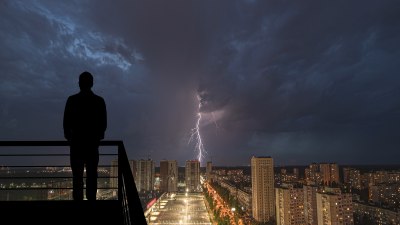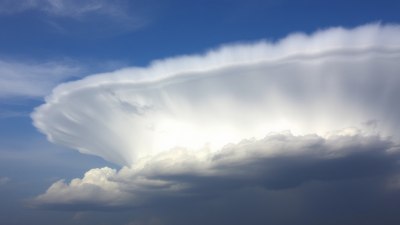How Lightning Can Strike the Same Place Twice: Debunking a Dangerous Myth
Discover the science behind lightning strikes and why they can strike the same place multiple times.

Lightning has always fascinated humanity with its beauty and power, yet it is often shrouded in myths and misconceptions. One of the most persistent myths suggests that lightning never strikes the same place twice, a belief that can lead to dangerous consequences, especially for those who work outdoors or in tall structures. The reality is quite different, as numerous scientific studies and real-world examples demonstrate that lightning can, and often does, strike the same location multiple times. This article aims to debunk the myth through scientific evidence and to provide insights into the workings of lightning strikes.
To understand why lightning can strike the same place twice, we first need to grasp what lightning is. Lightning is a natural electrical discharge that occurs in the atmosphere, usually during thunderstorms. When there is a buildup of electrical charges within clouds, typically due to the movement of water droplets and ice particles, a potential difference develops. When this difference becomes large enough, it results in a discharge of electricity, which we see as a flash of lightning. The bolt of lightning travels from the cloud to the ground, or between clouds, in a series of rapid discharge events.
One of the primary reasons lightning can strike the same place multiple times lies in the structure of the terrain and the objects within it. Tall structures, such as skyscrapers, radio towers, and trees, are more prone to being struck by lightning simply because they provide a shorter path for the electrical discharge to reach the ground. For example, the Empire State Building in New York City is struck by lightning approximately 20 to 30 times per year. Its height and metal structure attract lightning, making it a prime target. Therefore, it stands as a testament to the fact that certain places can be struck several times throughout a storm or even over a period of years.
The potential for lightning to strike the same location is not only contingent on height but also on the presence of conductive materials. Metallic objects, such as flagpoles or antennas, conduct electricity effectively, increasing the likelihood of lightning strikes. Additionally, objects grounded to the earth can provide pathways for lightning to follow, making it possible for the same spot to be struck multiple times. In essence, the myth fails to account for the fact that physics dictates that lightning will follow the path of least resistance — which can often lead it right back to the same area.
Evidence from Nature
There are numerous documented cases of locations that have been struck by lightning multiple times. For instance, in the U.S., there are historical reports of the same tree being hit repeatedly during a single storm. The “Old Ironsides” ship, commissioned by the U.S. Navy, was struck several times while sailing, underscoring the unpredictability of lightning. Lightning can strike structures as many as several times in a single storm, with some reports noting specific buildings being hit dozens or even hundreds of times over their lifespan.
Moreover, lightning strikes are also prevalent in specific areas known for having frequent thunderstorms. Regions like Florida, which experience an average of 100 thunderstorm days a year, have earned the title of lightning capital of the U.S. The high frequency of storms increases the chances of lightning hitting the same spots repeatedly. Such regions provide compelling data illustrating that the idea of lightning never striking the same place more than once is fundamentally flawed.
Understanding the Frequency of Strikes
To further elaborate on the frequency of lightning strikes, it’s essential to comprehend the phenomenon of cloud-to-ground lightning, which consists of both the preliminary stroke and the return stroke. When the initial stroke occurs, it establishes a channel between the cloud and the ground. If another discharge occurs along this established channel, it can result in a return stroke that appears like a second strike, potentially hitting the same location. This rapid succession of discharges can contribute to the illusion that lightning is striking the same area multiple times.
Statistically, lightning strikes are somewhat random but predictable in terms of frequency and location. For instance, in the U.S., over 25 million lightning strikes occur annually, equating to a strike approximately every second. While some regions may be more prone to lightning due to geographical factors, such as topography, land cover, and humidity, the shear volume of strikes increases the likelihood of multiple hits on the same site.
Protective Measures and Safety Concerns
Understanding that lightning can strike the same location multiple times is crucial for safety. Many outdoor enthusiasts, construction workers, or people residing in storm-prone regions may mistakenly believe that standing under a tree or near tall structures will keep them safe from lightning. However, this innate belief can lead to significant danger, as the risk of a strike is, in fact, heightened under such circumstances.
To mitigate the dangers of lightning strikes, it is essential to follow safety guidelines. If thunderstorms are forecasted, it is advisable to seek shelter in sturdy buildings or designated storm shelters. Avoiding open fields, elevated terrains, and tall isolated trees can drastically reduce the risk of a lightning strike. Additionally, electrical systems can be protected with surge protectors to help prevent damage from indirect strikes as well. Having a well-thought-out plan in place can save lives during stormy weather.
Myth-Busting and Public Awareness
Public awareness plays a pivotal role in debunking the myth that lightning does not strike the same place twice. Educational campaigns should emphasize the science behind lightning, focusing on the factors that lead to repeated strikes in some locations. Communities should be informed about the risks associated with lightning and the importance of recognizing early warning signs of thunderstorms. Informational materials, including posters, social media campaigns, and safety workshops, can empower individuals to take proactive steps to ensure their safety during storms.
In conclusion, the myth that lightning never strikes the same place twice is just that — a myth. Scientific evidence and numerous documented cases show that lightning frequently strikes the same location multiple times, often due to factors like height, conductive materials, local geography, and frequency of storms. By debunking this myth, we highlight the importance of understanding lightning and its behavior while emphasizing the need for safety protocols during thunderstorm conditions. Knowledge, awareness, and precaution can significantly reduce the risks associated with lightning strikes, especially for those in high-risk areas. As we continue to study and learn about lightning, let us dispel these dangerous myths and create a safer environment for everyone through education and preparedness.











